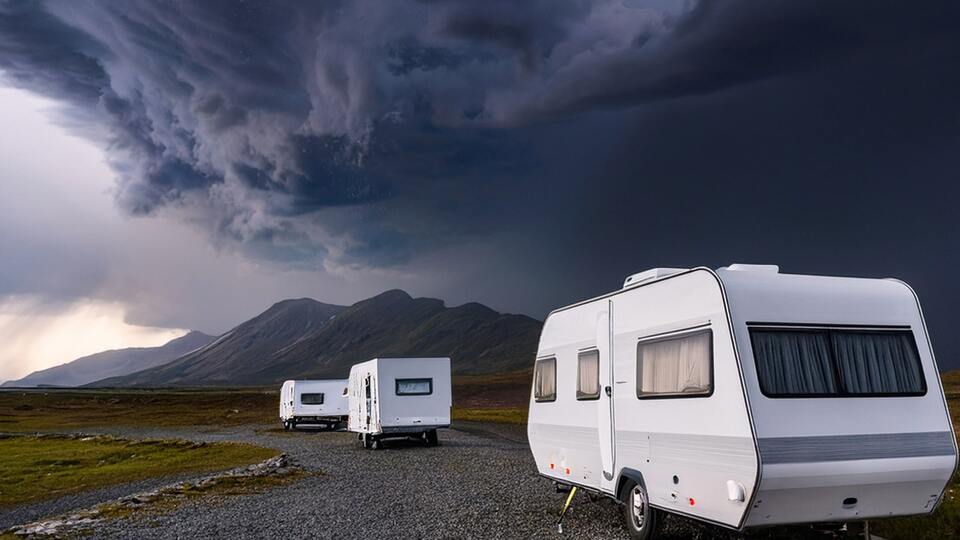Caravanning across Australia is an incredible way to explore the country’s diverse landscapes, from coastlines to the Outback. Whether you're venturing on a short weekend getaway or tackling a longer adventure, ensuring your caravan is safe and secure is crucial for protecting your family. Here are essential safety tips, specifically for Australian conditions, to make your journey smooth, enjoyable, and safe.
.jpeg)
1. Pre-Trip Vehicle and Caravan Inspection
A comprehensive check of both your towing vehicle and caravan is essential before any trip. Regular maintenance and pre-trip inspections can prevent breakdowns and keep all systems functioning well.
- Tyres: Check the tyre pressure, tread depth, and overall condition on both the caravan and towing vehicle. Worn or underinflated tyres are a leading cause of accidents and can be especially hazardous on Australia’s outback roads.
- Brakes and Suspension: The brakes and suspension of your caravan should be in top condition, as Australia’s rugged terrain can be taxing on these systems.
- Lights and Indicators: Test all lights, including indicators, brake lights, and tail lights. In some remote areas, you may encounter low visibility, making it essential that all lights are operational.
- Hitch and Coupling: Make sure the tow hitch and coupling are securely fastened and free from rust, dirt, or wear.
- Battery and Power Systems: If your caravan has a battery or solar power system, check that it's fully charged and functioning well, especially if you’ll be off-grid.
2. Drive Safely When Towing
Driving with a caravan requires a shift in your regular driving habits. A well-prepared driver is a safe driver, so familiarise yourself with the impact towing has on your vehicle's handling.
- Reduce Speed: Towing adds weight and changes your vehicle’s handling. Stick to safe speeds, especially on winding or unfamiliar roads.
- Maintain a Safe Following Distance: Your stopping distance will be longer with a caravan in tow. Aim for a minimum of a three-second gap between your vehicle and the one in front.
- Wide Turns and Extra Clearance: Caravans take a wider turning radius, so practice making wide turns in a safe area before embarking on your trip.
- Avoid Overloading: Overloading your caravan affects its stability. Follow the manufacturer’s weight limits and distribute weight evenly to prevent sway.
3. Ensure Proper Loading and Weight Distribution
Correct loading helps maintain stability and prevents accidents. Here’s how to safely load your caravan:
- Balance the Weight: Place heavier items over the axle and keep them low for improved stability.
- Secure Loose Items: All items inside the caravan should be fastened down to prevent movement while on the road.
- Check Tow Ball Weight: Aim for the ideal tow ball weight of 7-10% of the caravan’s loaded weight. This helps prevent sway and improves control.
4. Prevent Caravan Sway and Instability
Caravan sway is one of the most common hazards when towing. Sway can be caused by external factors, such as crosswinds or sudden maneuvers, but can be managed or prevented with these tips:
- Use a Sway Control Device: Installing a stabiliser or anti-sway device can reduce sway and improve your overall control.
- Avoid Sudden Movements: If sway occurs, avoid sudden steering adjustments or braking. Instead, gently ease off the accelerator and steer steadily until stability returns.
- Maintain Tyre Pressure: Correct tyre pressure is critical for stability and safety, so check it regularly.
5. Prepare for Different Road Conditions
Australia’s diverse landscapes can present unique challenges, so it’s essential to be prepared for varied road conditions.
- Hills and Inclines: When tackling steep hills, shift to a lower gear and maintain a steady pace to avoid overheating the engine. When descending, use low gears to avoid relying too heavily on the brakes.
- Gravel and Dirt Roads: Reduce your speed on unsealed roads, and be prepared for loose gravel or potholes, which are common in rural Australia.
- Weather Conditions: Always check weather conditions before you set off, as sudden rain, high winds, or even dust storms can affect handling. Adjust your speed and use headlights as needed.
6. Be Mindful of Other Road Users
Safety also involves being mindful of other vehicles. Caravans can be difficult for other road users to manoeuvre around, so share the road responsibly.
- Use Indicators Early: Signal well in advance to alert other drivers to your intentions, whether turning, changing lanes, or stopping.
- Stay in the Left Lane: On major highways, stay in the left lane, as required by Australian road rules, to allow faster-moving traffic to pass.
- Allow Vehicles to Pass: Where possible, move to the side or use slow-vehicle turnouts to let other vehicles pass safely.
7. Pack an Emergency Kit
An emergency kit is essential for any Australian road trip. Important items include:
- First Aid Kit: Stocked with supplies for cuts, scrapes, and burns, a first aid kit is crucial, especially if you’ll be far from medical assistance.
- Basic Tool Kit: A few essential tools, such as a jack, wrench, and screwdrivers, can be invaluable for quick repairs.
- Spare Tyre and Jack: Ensure you have a spare tyre and the necessary equipment to change a flat on the roadside.
- Reflective Triangle and Vest: These items are essential if you need to stop on the side of the road, as they increase visibility for other drivers.
8. Utilise Safety Technology
Modern technology provides real-time assistance and monitoring, making your trip safer and easier.
- Reversing Camera: A rearview camera helps with reversing and can prevent accidents when manoeuvring in tight spaces.
- Tyre Pressure Monitoring System (TPMS): A TPMS keeps you informed of your tyre pressure, alerting you to changes that could signal a potential blowout.
- GPS and Navigation Apps: Use caravan-friendly navigation tools that account for your vehicle’s size, helping you avoid low-clearance bridges or unsuitable roads.
- Portable Fire Extinguisher: This is particularly useful for longer trips where cooking appliances or heating systems may be in use.
9. Take Regular Rest Breaks
Fatigue is a significant factor in accidents, particularly on long stretches of Australian highways. Plan for breaks every two hours, or share the driving to stay alert.
- Rest Areas and Caravan-Friendly Stops: Many areas across Australia offer rest stops where you can safely park your caravan. Use these stops to rest, refresh, and take in the scenery.
10. Protect Your Caravan with Insurance
While safety measures reduce the risk of incidents, Caravan insurance provides peace of mind. This covers damage, theft, and liability, offering valuable protection in case of unforeseen events on the road.
Disclaimer: The information provided in this article is intended as general advice only and does not take into account your personal circumstances, financial situation, or specific needs.
.jpeg)
.png)



